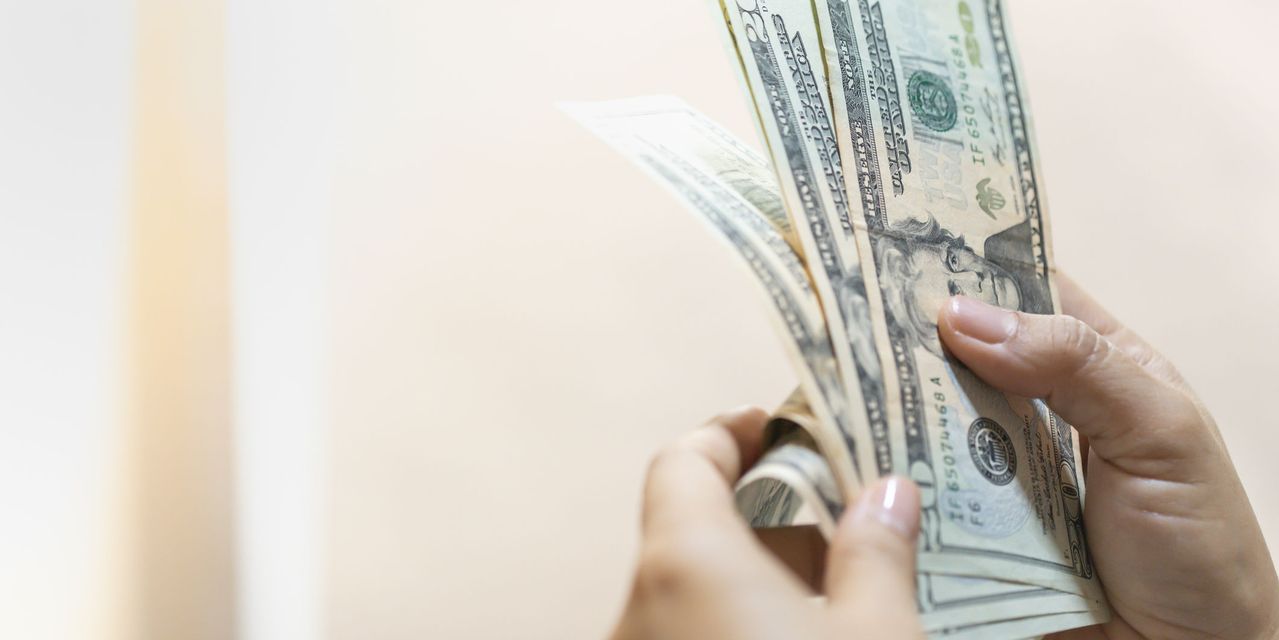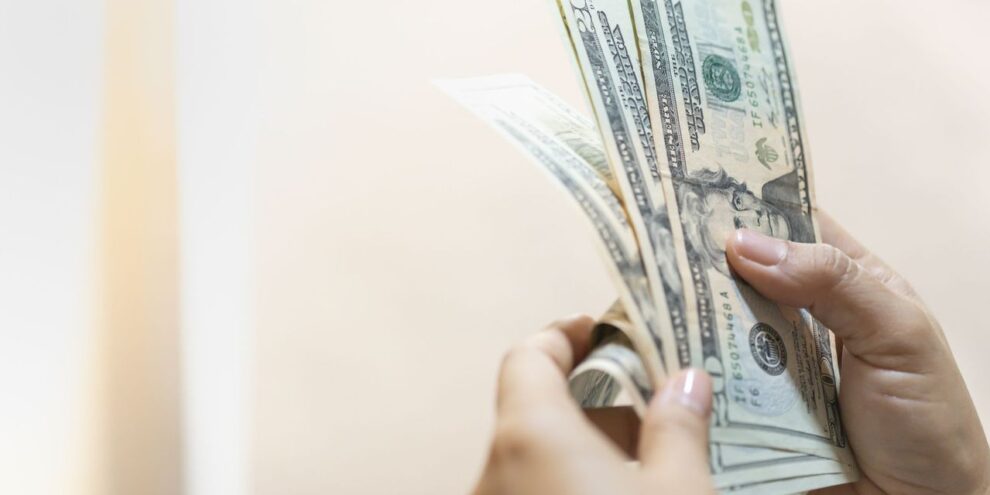
2022 is shaping up as a historic year for markets, including the world’s reserve currency.
While the S&P 500 is headed for its worst first half in more than five decades, the dollar appreciated during the first six months of 2022 by the largest margin in history, according to some measures.
The Federal Reserve’s decision to raise interest rates by 75 basis points in June in pursuit of what Capital Economics describes as the most aggressive monetary tightening since the 1980s has caused the greenback USDJPY, -0.29% to rally 17% against the Japanese yen during the first half of the year. This is the largest such move by the dollar against the yen in history, according to Dow Jones Market Data, based on figures going back to the early 1950s.
Against the euro EURUSD, -0.44%, the greenback’s other main rival, the dollar has risen more than 7% since the start of the year — its strongest first-half performance since 2015, when an economic crisis in Greece stoked fears about the possible collapse of the eurozone.
And measuring the dollar’s strength more broadly, the WSJ Dollar Index, BUXX, +0.15% which incorporates 16 rival currencies into its calculation of the dollar’s value, has risen 8% so far this year, on track for its largest first half appreciation since 2010.
In the currency market, where intraday moves are typically measured in basis points, macro strategists told MarketWatch that moves of this magnitude are more typical of emerging market currencies, not G-10 currencies like the U.S. dollar.
But why is the dollar rising so aggressively? And what does the dollar’s strength mean for stocks and bonds as the second half of 2022 begins?
What’s driving the dollar higher?
With inflation raging at its most intense level in 40 years, the dollar has benefited from two tailwinds this year.
The most important, according to a handful of currency strategists on Wall Street, is the widening differential between interest rates in the U.S., and the rest of the world. Dozens of other central banks (including the European Central Bank) have decided to follow in the Fed’s footsteps by raising, or planning to raise, interest rates. However, real interest rates in the U.S. — that is, the rate of return on bonds and bank deposits when adjusted for inflation — remain more attractive, particularly compared with Europe, where inflationary pressures have been more intense, and the European Central Bank only recently unveiled its plan to embark on interest-rate hikes beginning in July.
In Japan, where inflationary pressures are more subdued, the Bank of Japan has resisted the global trend of monetary tightening and continued to pursue its policy of yield-curve control by buying massive quantities of Japanese government bonds.
But a favorable interest-rate differential isn’t the only factor driving the dollar higher: the greenback has also benefited from a newly acquired “safe haven” status.
According to a model developed by Steven Englander, global head of G-10 currency strategy at Standard Chartered Bank, 55% of the dollar’s appreciation this year has been driven by interest-rate differentials (and, more important, expectations surrounding the path of monetary policy in the U.S. relative to other developed nations) while the other 45% has been driven by safe-haven flows.
Englander and his team developed by the model by comparing the dollar’s performance to simultaneous moves in Treasury yields and U.S. stocks.
“Since mid-March the most reliable indicator of USD strength has been spreads rising and the S&P falling,” Englander wrote in a recent research note introducing his model.
The S&P 500 SPX, -0.07% has done a lot of falling. It’s down nearly 20% in the year to date through Wednesday, on track for its worst first-half performance since 1970, according to Dow Jones Market Data. The Dow Jones Industrial Average DJIA, +0.27% was down 14.6% over the same stretch, its worst such performance since 2008.
Read: What’s next for the stock market after it has its worst 1st half since 1970? Here is the history.
And investors have found no safety in government bonds, with Treasury yields, which move opposite to price, rising sharply as the Fed moves to aggressively tighten monetary policy.
See: Major bond ETFs on pace for worst first half to a year on record
But even when stocks have fallen and bonds have rallied (bond prices move inversely to yields), the dollar has, more often than not, continued to appreciate. The pattern is clear: since the start of the year, when markets have turned risk averse, the dollar has benefited.
“This may be because when risk appetite — for example, due to the Russia-Ukraine war — is driving the USD, there is a tendency for both U.S. rates and foreign rates to move in the same direction. As a consequence it may be ambiguous whether the spread rises or narrows, but the USD is very likely to respond to the risk move rather than the spreads,” Englander said.
Historically speaking, this type of trading pattern is anomalous, and whether it persists heading into the second half of the year is open to debate. With the Federal Reserve insisting on reacting to developments in growth and inflation as the data comes in, expectations surrounding the Fed’s plans will continue to change heading into the fall, said Marvin Loh, a senior global macro strategist at State Street.
“Right now we’re pricing in being done [with Fed rate hikes] within the next 9 or 12 months. If that’s not the case then you’ll get a continuation of the story,” Loh said.
Over the past week or so, movements in derivatives markets suggest that investors are starting to second-guess whether the Fed will follow through with at least 350 basis points of interest-rate hikes this year. The central bank has already increased the upper band of its Fed funds target rate to 1.75%, and according to the Fed’s most recent “dot plot” released in June, the “median” forecast calls for a target rate between 3.50% and 3.75% next year.
However, Fed funds futures, a derivative used by investors to place bets on the direction of the benchmark interest rate, have started to price in a rate cut in July 2023.
A recent pullback in the price of crude oil CL00, -1.18% and other commodities — industrial metals and even wheat have seen prices fall sharply — has helped to temper inflation expectations somewhat. But should inflation persist for longer than expected, or should the U.S. economy resist sliding into a recession, expectations surrounding the pace of Fed rate hikes could shift again.
Then again, as other central banks scramble to catch up with the Fed — 41 of the 50 central banks covered by Capital Economics have raised interest rates so far this year — it’s looking increasingly likely that the interest-rate differential between the Fed and its rival central banks could start to fall back.
As far as other central banks are concerned, perhaps the biggest question on this front is whether the Bank of Japan and the People’s Bank of China might abandon their easy monetary stances.
Neil Shearing, group chief economist at Capital Economics, suggested recently that the BoJ is more vulnerable to a capitulation on the monetary policy front than the PBOC.
At this rate, if the BoJ continues buying bonds to defend its cap on JGB yields, it will own the entire Japanese government bond market (one of the largest sovereign bond markets in the world in terms of total issuance) within a year, Shearing said.
Consequences of a stronger dollar
But there are also plenty of domestic factors that could influence the direction of the dollar. As inflation persists and the U.S. economy starts to slow — the “flash” reading on the S&P Global Composite Purchasing Managers Index for June showed economic output slowing to its weakest level since January’s omicron-driven slowdown — it’s important to remember that the macroeconomic environment looked very different just a few years ago.
During the 2010s, central banks around the world were aiming to keep their currencies weak to make their exports more competitive while importing a measure of inflation.
Now, the world has entered a period of what Steven Barrow, head of G-10 strategy at Standard Ban, calls a “reverse currency war”. Today, a strong currency is more desirable because it acts as a buffer against inflation.
Because it’s the world’s reserve currency, the strong U.S. dollar is a problem for developed and emerging-market economies alike. While the U.S. economy is relatively insulated from the financial stresses caused by a strong dollar, if its strength persists, Barrow worries that other economies could face “some nasty problems”, including exacerbating inflationary pressures or potential currency crises like the one that gripped East Asia and Southeast Asia in 1997.
But will the dollar’s strength persist into the second half of the year? On this, analysts and economists are divided. Jonathan Petersen, a markets economist at Capital Economics, said he believes the slowing global economy means the dollar likely has more room to advance, particularly after its latest pullback.
Englander, on the other hand, sees the dollar retracing some of its gains during the second half of the year.
He suspects that a rebound in risk appetite could drive the S&P 500 higher during the second half of the year, while the reversal of “safe haven” flows and a shrinking interest-rate differential could conspire to sap some of the dollar’s strength.
However, an outbreak of “earnings pessimism” driven by a U.S. economy sliding into recession could weigh on stocks and bolster the dollar, while a “soft landing” like what the Federal Reserve is shooting for could provide a cushion for stocks while sparking some retracement in the dollar.








